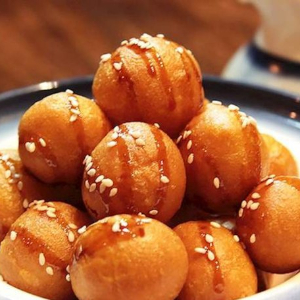Over the past few days, we’ve covered the favourite mains and sides of Turkey, and we’ve learned how this ancient culture influenced its neighbours from the Aegean to the Caspian Sea. Today, we’ll survey some beloved Turkish desserts and signature beverages…
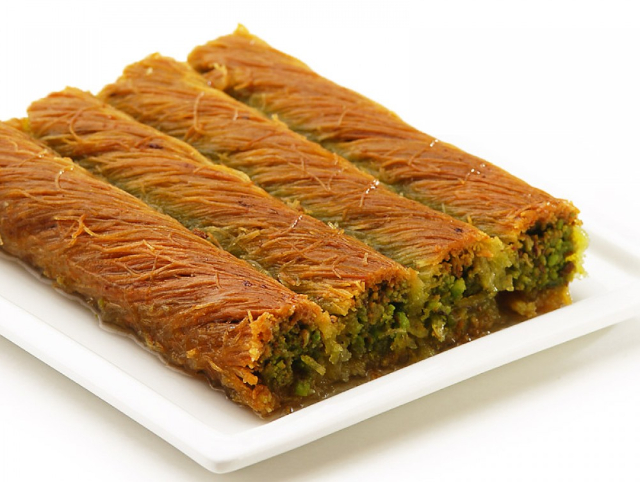 Kadayif: One of Turkey’s lesser known dessert delights!
Kadayif: One of Turkey’s lesser known dessert delights!
Turks adore their super-sweet desserts as much as they love their savoury mains and sides. Today, we’ll look at some familiar treats as well as some lesser-known Turkish delights (pun intended!).
On our menu today
Lokum: This is the ‘official’ Turkish name for the world-famous Turkish Delight. It’s the national dessert of Turkey and was exported to many neighbouring cultures. Lokum is a stiff jelly bite traditionally flavoured with Rosewater, but it can also be found in mint, vanilla, citrus and berry versions. When thoroughly cooked and set, Lokum is usually cut into small squares and dredged in powdered sugar. Now-a-days, confectioners offer other formats for this classic, including roll-ups and versions stuffed with pistachios, walnuts or hazelnuts.
Baklava: Versions of this universally enjoyed dessert are found in many Balkan and Middle Eastern cuisines. And it’s one of Turkey’s most famous contributions to global cuisine, coming down to us from Ottoman times.
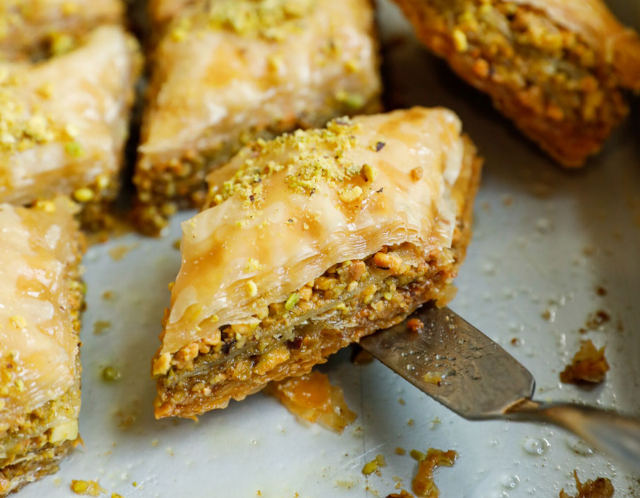
Baklava is considered the national dessert of Turkey. As most food lovers will already know, Baklava is a square based on Phyllo Pastry, stuffed with nuts and doused in a thick sugar syrup.
Kadayif and Kunefe: Sister pastries, these sweet bites rival Baklava for gooey decadence. Kadayif Pastry – a special Turkish style of Phyllo that looks for all the world like Shredded Wheat – is used for the base and the top. A rich stuffing of walnuts or pistachios nuts and lemon-infused sugar syrup makes this treat a diet killer. It’s chewy in the centre and crispy on top. And it’s hard to stop at just one. Kadayif and Kunefe are beat described as non-identical twins: Kunefe is simply Kaydaif with cheese added to the filling.
Helva: Better known in other eastern Mediterranean countries as ‘Halva’, this is a is creamy-chewy square based on flour, sugar, tahini and coconut oil.
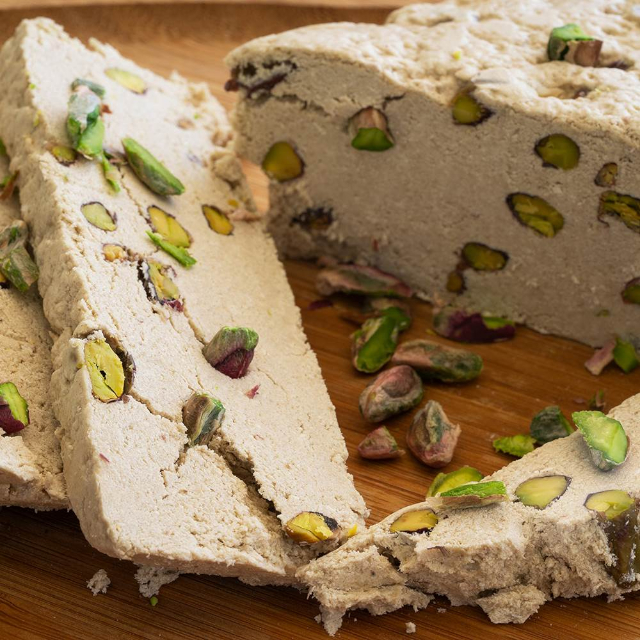
It may incorporate many different kinds of fruits and nuts depending on the tradition that prevails where you buy it. One of the triumvirate of most-beloved Turkish sweets, along with Lokum and Baklava.
Lokma: You’ll think you’re looking at a mound of Doughnut Holes when you first see Lokma (see photo, top of page). They’re bite-sized, deep-fried, golden-brown nuggets soaked in sugar syrup or honey. They’re made from a light, foamy yeast-raised dough, and sometimes dredged in powered sugar or cinnamon fresh out of the fryer. They’re available everywhere in Turkey where food is sold.
Dondurma: Turkish Ice Cream. It’s very different from what we in the West consider Ice Cream, as Wikipedia explains: “Dondurma is a Turkish mastic ice cream, typically including the ingredients cream, whipped cream, salep (ground-up tuber of an orchid), mastic (plant resin), and sugar. It is believed to originate from the city and region of Maraş and hence also known as Maraş ice cream.
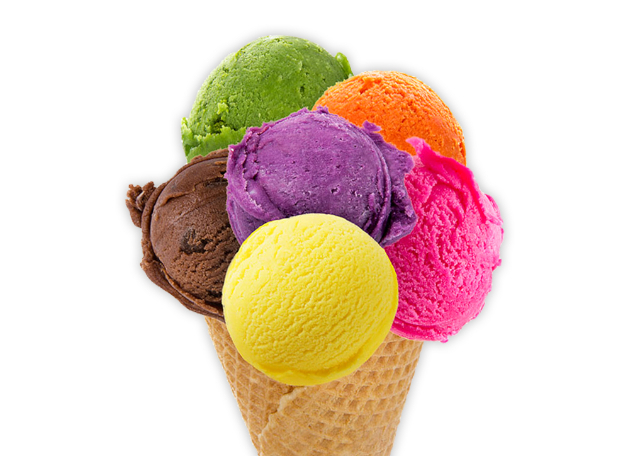
“Still game to try it? Frozen, it has a hard texture and resists melting bravely. Served cold but not frozen, it has a gooey, viscous texture and is sometimes used as a topping for other Turkish desserts, notably Kadayif and Kunefe.
Signature beverages
Turkey boasts a number of classic, trademark beverages you won’t find in quite the same format anywhere else. Some will be familiar to you; others will surprise or even amaze you!
Turkish Coffee: Not as dark or heavy as Espresso, it’s still plenty robust. Never served with milk or cream, it may be ordered in unsweetened, half-sweet or sweet versions.
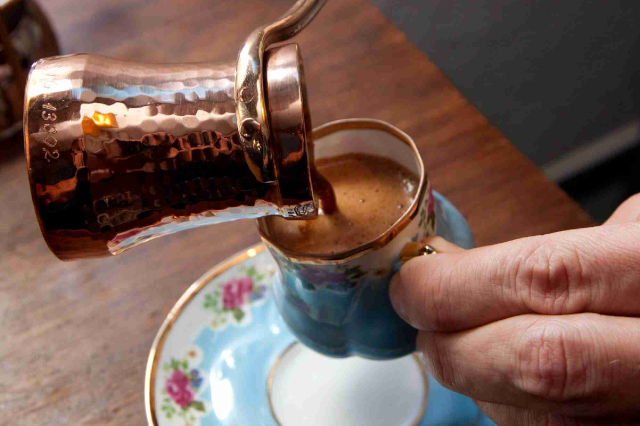
Turkish Coffee should arrive at your table fresh, hot and foam-topped.
Turkish Tea: Everywhere you go, socially, in Turkey, you’ll probably be offered a glass of tea. The Turkish Tea tradition is said to have originated 5,000 years ago in the Black Sea coast region where most of the Turkish tea plantations are still located today. The tea leaves are subjected to a number of processes after harvesting, through drying. It makes a rich, dark red brew some still call ‘tavşan kanı’, or ‘rabbit’s blood’. Several spoonfuls of the tea are brewed in a small pot using boiling water brought to the table in a second pot that sits below the brewing vessel. More hot water is used to dilute the tea cup by cup to the preference of the drinker. As famous as Turkish coffee is the world over, Turkish tea is by far the domestic favourite.
Ayran: Though not really an equivalent to Buttermilk as we know it in the West, ‘Turkish Buttermilk’, made by adding water to plain yogurt, is a national favourite in Turkey. Goturkey.com suggests: “To fully experience the refreshment, be sure to drink it cold.”
Boza: How do you feel about a thick, gooey mugful of fermented cracked what and yeast? It’s Turkish through-and-through, originating in the Anatolia region.
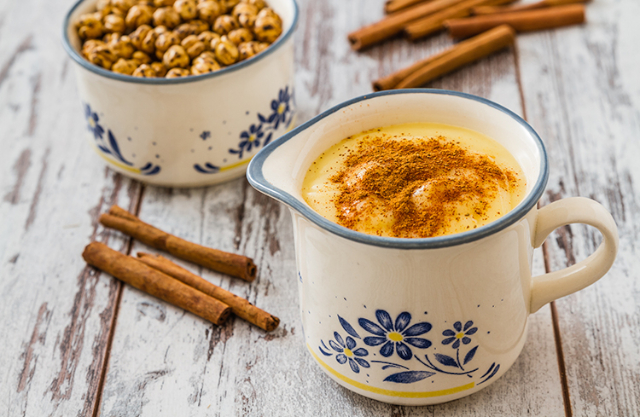
Boza is a seasonal favourite, popping up everywhere in winter, and is claimed to have medicinal powers including reducing blood pressure, and is rich in potassium. It’s often served with toasted Chickpeas, a popular Turkish bar snack.
Şalgam Suyu: Prepare to be amazed! (I warned you…) This is probably one of the oddest, most-alien sounding beverages you’ll ever encounter when touring a foreign culture’s cuisine.
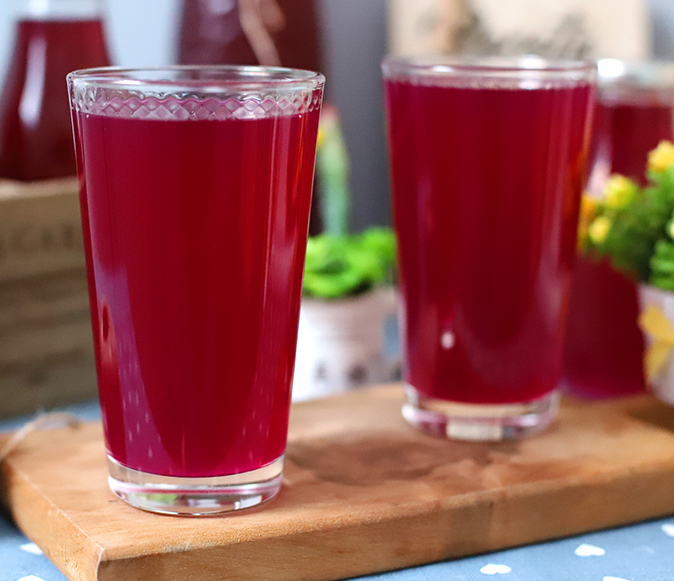
It’s a fermented red turnip juice quaff enjoyed widely, though it’s home place is the Cukurova region, in south central Turkey. The juice is non-alcoholic (a fermentation process similar to conventional pickling is used), and is considered an aid to digestion.
Raki: Last, but not least, Raki is a rather harsh brandy made from anise and grapes. Folks always add some water to their Raki and often add ice on top of that. This produces a milky-looking, smoother drink. Westerners may enjoy a beer after work with friends. Turks always order a Raki!
Şerefinine! (To your health!)
So drink a toast (preferably with Raki!) to the classic desserts and beverages of Turkey. If you ever make it to Turkey, Turks insist you must try them all!
That brings to a close our culinary tour of Turkey. Hope it made you as hungry as it made me!
And remember to get on the internet and Google the heck out of the Turkish foods that strike your fancy. There’s tons of historical and preparation info available, and in spite of the exotic air that surrounds them, most of the ingredients that are called for in the recipes for the dishes we’ve spotlighted are readily available in North American supermarkets. You don’t have to go to Turkey to experience the country’s 5,000 year culinary tradition!
~ Maggie J.

